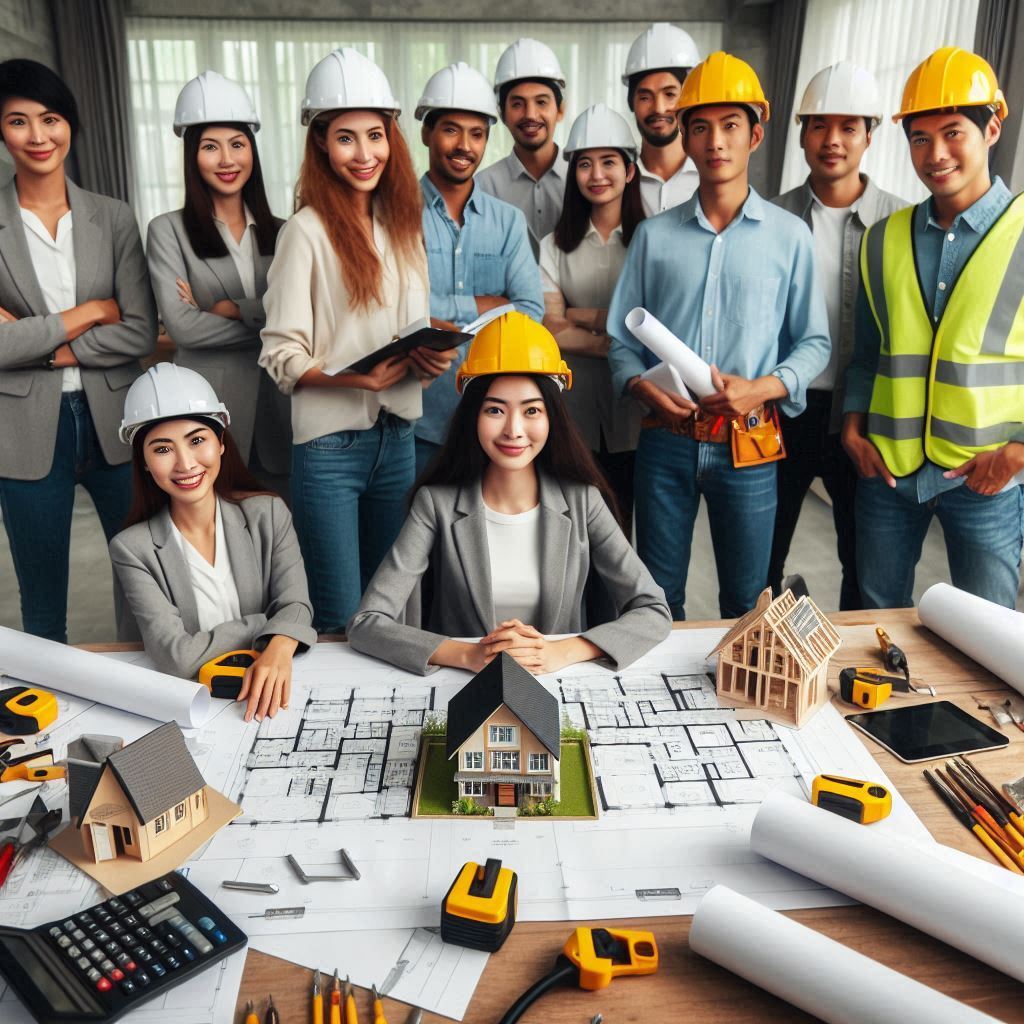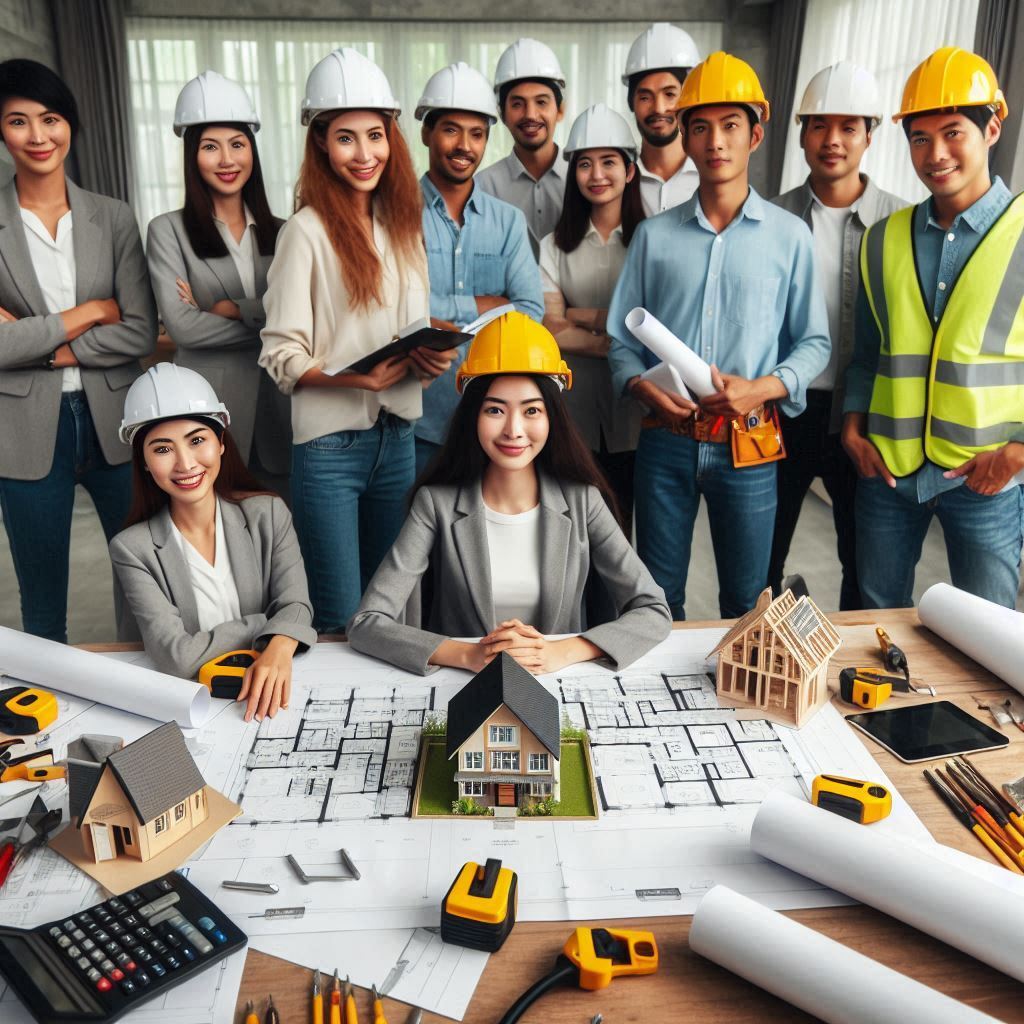The state of home design and construction is fluid, moving with changes in technology that affect either how homes are built or what homeowners expect from their spaces. Whether you are looking to build your dream home or renovate an existing property, having a good grasp of the fundamental concepts that underlie contemporary modern housing design principles—such as energy efficiency and indoor living space comfort, which have been important climatological factors for millennia—is crucial. Through this article, we want to share some of the latest cutting-edge trends & real-life practical points in home design and construction that is surely going to provide loads of valuable learnings for both homeowner or experienced building designers.
Home design and house construction have come a long way!
The way houses were designed and built has changed drastically from the simple structures that made up of basic materials. Homes of today have transcended to the time where everything is bound and intertwined by aesthetics, function, and sustainability. To explore these drivers and predict what the future of home design + construction might look like, let’s first delve into some numbers.
1. Sustainable- the essence of modern design
It’s not just a buzzword any longer — sustainable practices are now standard in home design and construction. Eco-friendly materials, energy-efficient systems and sustainable practices are more popular than ever among homeowners builders alike. There is a lot of ground that sustainable building focuses on, from the type solar panels used to green roofing materials — however this not only aids in reducing your environmental impact but can also lead to some long-term savings.
Recycled & reclaimed materials: Probably the trendiest of all, sustainable home design in 2021. For an example, reclaimed wood offers a sense of authenticity about your home without further depletion old-growth forests in order to find the perfect timber. In the same vein, recycled steel and concrete are on an upswing for being long lasting as well as eco-friendly solutions. This in-cooperated materials can also make it different from the normal looks aligned with an environmentally friendly world.
2. More than likely, building a smart home will be right at the top of your project list — and that should come as no surprise.
From every bit of our daily lives, technology had entered and it includes home design as well which even affects construction in addition to that. Homes are now becoming smart, intelligent living spaces instead of just ordinary ones. They are very popular in the market, as they offer convenience, security and energy efficiency.
Smart home systems have the ability to automate lighting, heating and alerts by phone or even voice. Smart thermostats are a good example of affordable products that actually learn your behavior and adjust the temperature accordingly, applying energy savings in every moment. In recent years, a growing number of technological developments related to high tech security alarms and access control for business owners have increased their demand. Not only do these technologies make the living experience better but they also add significant value to your property.
3. Moving Towards Open Floor Plans
Modern techniques to modern home styleOpen flooring plans have come to be a signature quality of contemporary house layout. High demand for spacious, multifunctional areas has spurred the removal of more walls and barriers between rooms resulting in open-living airier layouts. This design offing encourages communication, maximizes exposure to natural light and makes the furniture arrangement versatile.
The kitchen is often open to living and dining rooms so your guests can be a part of the party, even if they are in another room. Open floor plans are especially fashionable in city life where space is at a premium. They also accommodate the rising remote work environment with flexible spaces that can function as a home office, gym or entertainment room.
4. Prefab: Then And Now
Modular homes, also known as prefabricated homes are quite popular in current scenarios to build a home at less cost and minimum period. Each of these homes are built in parts at a factory and then shipped to the site, greatly lowering construction times along side costs. Nearly all prefabricated homes enjoy a considerable degree of customization, giving homeowners the flexibility to select from numerous configurations on layout as well with materials and finishes.
Prefabricated homes are of a much better quality than they used to be primarily due to improved manufacturing and materials over the years. Today, they can often blend in seamlessly with traditionally built homes and be customized to meet certain environmental standards. It also saves waste and disruption during construction, which reduces carbon footprints.
5. Biophilic Design: The Outdoors Come Inside
Biophilic design is a trend that’s becoming increasingly popular as it seeks to bring people closer to nature via the materials they use in their environment. Inspired by biophilic design, the concept that humans possess an innate connection weathered spaces evoke a greater sense of calmness and are expressive of age (unlike what new can achieve).
Biophilic design elements Biophilic design features references what makes up biophilia, which may include large windows with plenty of natural lighting or indoor plants to trees cut out stone and water; The earthy color palette is soothing as are the organic shapes used throughout. Biophilic design is done by introducing elements of nature in your living spaces to make the environment much more conducive for a healthy state, mentally and physically.
6. Focus on Energy Efficiency For Today’s Homeowner

Energy-efficiency has become a top concern for home design and construction because of escalating energy prices, as well as the environmental crisis. You can reduce your energy expenditures by utilizing power-preserving home equipment, insulation and home windows. Solar panels are also available providing a free source of power and reducing the dependency on traditional electricity grids.
Apart from this, house appliances and systems home design itself are critical in optimizing energy efficiency. Other examples include passive solar design, which deliberately collects heat and light from the sun by designing your home with lots of windows shaded in the summer where less sunlight might be wanted (such as cool interior rooms), while facing them to take advantage of southern exposure during cold weather — using materials that absorb and slowly release this warmth. Homeowners can minimize their carbon footprint through more efficient building design, and save in the long run.
7. Home Automation; The Even Newer Smart Living Experience
Home Automation: A Notch Above your Smart Living Solution Home automation is only a step above the smart living system, as it connects all systems in one single network. Home automation technology enables homeowners to manage lighting, temperature, security and entertainment systems from a centralized hub or mobile device. Home automation systems are customized to meet each user´s special requirements offering comfort,security and energy-savings.
So, for instance there are building-integrated automated lighting systems that can adapt the brightness in relation to natural light levels or time of day.[4] Climate control systems that learn, with automated replies You need the room 40 percent of your time; it needs to be at this temperatureYou save over half on energy Home surveillance systems integrated with cameras, motion sensors and alarms provide you an all-around protection for your home.
However, as time goes on it looks increasingly likely that home automation will continue to advance and become more approachable and user-friendly — finding a place in the core design of modern homes.
8. Home Design: Why Customization Is Important
Personalisation is everything in crafting a home that mirrors the innate personality and lifestyle of its denizen. Modern homeowners want unique, custom spaces designed for their individual wants and needs. Customization involves architectural design, interior décor and the choice of materials & finishes.
Architectural Design allows a distinction to be created whereby bespoke homes are beyond the cookie-cutter nature. Whether it be an open-plan living area, a home office or private outdoor space — these future trends allow homeowners the flexibility they need in today’s escape from normal life.
Customization also shines in interior décor. Every element can be custom-selected from a color palette to the furniture and accessories. With custom cabinetry, along with unique choices such as lighting and artwork turning the space to more of a one-of-a-kind yet personal quality.
9. How Technology Has Changed Construction in Home Building
Not just home layouts are changed with the technology, saying that construction process is no more behind than ever. 3D printing, robotics and virtual reality are just a few examples of the innovative construction technology in use today. These technologies provide more accurate and efficient construction that can also deliver homes faster while maintaining build quality.
For example, 3D printing makes it possible to construct even the most intricate forms and reduce waste in production. Robots may do the same task over and over at a steady pace, which retains labor costs and speed of construction. This allows both architects, builders and homeowners the ability to see exactly what is going on before construction begins ensuring that everyone can deliver a product that meets everyones expectations.
They will grow to be applied in some of the construction and design world, as these technologies improve.
10. Jasper: The Future of Home Design and Build
We are in a bright age where home design and construction is taking place with ongoing innovations that progress the lifestyles we enjoy. With sustainability, technology and customization at the forefront of our industry moves be prepared for homes that are more efficient, work better AND look darn good doing it. For those who call any of these spaces home, the melding of smart technologies with sustainable practices and personal design delivers a quintessential living experience that is better tailored to each individual. vacuum86/vacuum_mirror
In summary,home design and construction are one of the most innovative frontiers in today society, with new trends appearing all the time. This is essential whether you are building a new home or renovating an existing one. It simply means that sustainability, smart technology and customization can come together to create design scapes that look good as well as one whose working style is also contemporary enough. We are now already in a time where these futures can be further evolved and globalized into the present: and when it comes to home design & construction, this future is more exciting than ever.
Conclusion
We are entering a new age of technology, sustainability and individualism that reshape the way we design & build homes with limitless possibilities. These trends and innovations remind us of what the future could look like, with our homes doing so much more than simply house a family. These trends will now help you make an informed decision when it comes to constructing or renovating a home and in turn add value, comfort and cleanliness of your house. Home design is the future of Home Building — not just building houses, but creating homes that shows who we are and how do we want to live!
